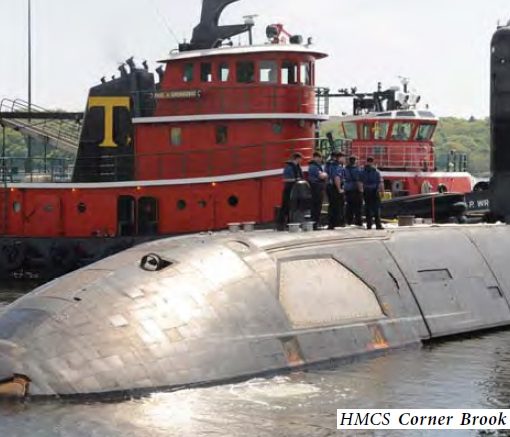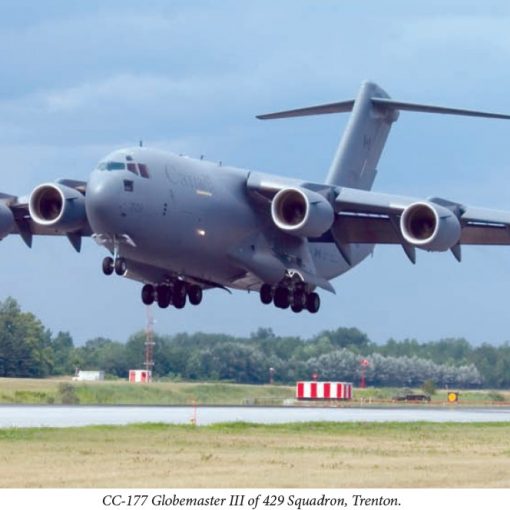It seems to me that Airedale is expressing frustration at the lack of a comprehensive explanation by the navy about how the future fleet plans make it any better able to meet the new security demands than it is currently capable of doing. That there is a continuity in Canadian fleet composition from past to present does not ‘jive’ with the radical reorganization and restructuring going on in almost all of the other navies in the world. Moreover, the plans, as they exist, are completely unaffordable, yet they are pursued with unswerving vigour. If this is a bargaining ploy it is obviously a bad one given the current strategic environment and degree of operational commitment. History has some important pointers about what to do in such circumstances.
One of my favourite historical facts is about the reasons for the rise of the Jeune École in France after her defeat by the North German Confederation in 1871. With the army given budgetary priority (sound familiar?), naval funding was cut by 25 percent and the total number of vessels in the French fleet was reduced from 439 to 137 (a decrease of 68.6%!). The radical ‘new thinking’ of that era was caused by a new security and fiscal environment that had little to do with purely naval issues. The professional elite of the French navy was swept aside while others searched frantically for a new strategy because the status quo was neither appropriate nor affordable. Not surprisingly, Airedale believes that the Canadian situation has much akin to that of the French. Fortunately, we do not have a hostile major foreign power on our borders!
Airedale sees that the USN, which has no peer competitor and is our closest ally, has more combat power now than at any point in its history. Somehow, the implications of this major strategic factor do not seem to have influenced Canadian force planners. The Canadian navy’s continued emphasis on uniformly upgrading combat capabilities and low regard for such things as logistical capacity shows it is has little interest in ‘lesser’ military functions, or in domestic sovereignty and constabulary roles. The navy's position that the arctic and offshore patrol vessels will be a reserve responsibility is another such indication. This concentration on high-end capability also became evident during the recent Integrated Tactical Effects Experiment. The force planning model went directly to a full-up amphibious exercise instead of choosing a more reasonable starting point. The result was the prompt shelving of the concept due to its unaffordability and impracticality. Finding an amphibious model more relevant to national circumstances and requirements (naval engineers for disaster response or naval commandoes for special operations) would have been a lot easier to test and to sell. If there is logic behind the navy’s current plans, Airedale complains only that it is unclear.
I disagree completely with Peter Haydon on two important points of historical fact. First, the task group concept is not as old as naval history. The German navy was the first to experiment with the tactical employment of mixed warship formations at the end of the First World War. Until that time, uniform ‘type’ formations were the standard for operations and administration. ‘Task’ formations of many types were developed further in the interwar period, mainly by the Americans and Germans. The British came very late to the task organization - and so too, by extension, did the Canadians.
The standardized formulation of the Canadian task group without reference to a relevant activity is nonsensical. Yet, the term is tossed carelessly about with regularity. Most don't even realize that our use of the term has more to do with force generation and fleet maintenance than operational concepts. We have fallen victim to an unthinking use of doctrinal terms that have become disconnected from their original meaning. This is not surprising because the Canadian navy has no approved operational doctrine to provide clarity of thought and consistency of language.
Second, the current frigate is not basically a destroyer-type vessel. The destroyer, as a battlefleet asset, has always been related to the function of fleet engagement. Today’s frigates owe their lineage to the heavy cruiser; their functions were related mainly to trade protection and exclusion. (See my article, “Kingsmill’s Cruisers: The Cruiser Tradition in the Early Royal Canadian Navy,” The Northern Mariner, Vol. XIII, No. 1 (January 2003): 37-52, for a full treatment of this subject.) The line between these two types of ships became blurred during the Second World War when obsolescent destroyers were assigned to trade protection duties and when long-range cruisers were forced into battleline positions due to the treaty-imposed limitation on numbers of capital ships (light cruisers stayed with the flotilla forces that provided screening and reconnaissance for the battleline). At the start of the war, the real function of heavy cruisers was hunting operations for commerce raiders (both naval and armed merchant types). That the RCN envisioned conducting such operations with destroyers showed the immaturity of their force planning and lack of understanding of contemporary operational concepts. (My article “The “Destroyer Myth” in Canadian Naval History,” Canadian Naval Review, Vol. 2, No. 3 (Fall 2006): 5-9, examines this weakness.) Most frigates today have neither the offensive firepower nor the defensive capacity to function usefully in high-intensity battlefleet activities. They ‘get away with it’ so long as there is no real peer competitor to raise the risk factors. They will become just as ‘expendable’ as were heavy cruisers and the screening ships in the Second World War when the fighting got serious between the capital ships.
Airedale's main point is that the Canadian navy seems to be dictating force structure and capabilities to the government (with the notable exception of the arctic offshore patrol vessels), instead of the other way around. This is the ‘real’ legacy of the RCN to today's navy. My thesis research on the endurance characteristics of the RCN during 1935-45 showed that the navy’s leadership deliberately contravened government direction on fleet capabilities to the general detriment of the navy during the war. The narrow-minded view of sea power the RCN inherited from the RN persists to this day (even long after the British have abandoned it) and this is an unfathomable mystery to other medium power navies, the Canadian government, and the people.
What we need is a fuller definition of sea power that shows the complete range of functions, capabilities, missions and tasks that must be fulfilled by a country with national and international maritime responsibilities. The problem with this proposition is that there is too little effort currently dedicated to higher naval education and too few Canadian maritime theorists to hold out much hope of a ‘naval awakening’ in the near future. In the meantime, Canadian Naval Review and this forum are the best alternatives for discussing the issues. I welcome Airedale’s declaration of discontent and invite others to engage in the discussion, either openly or under a nom de plume.



